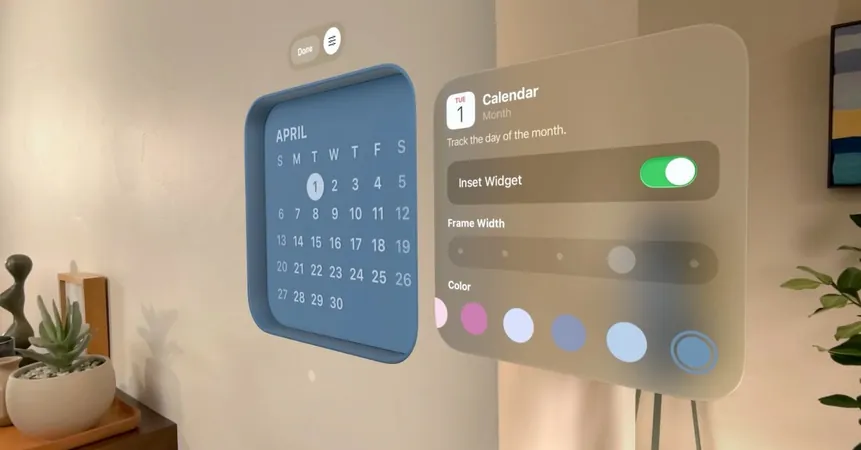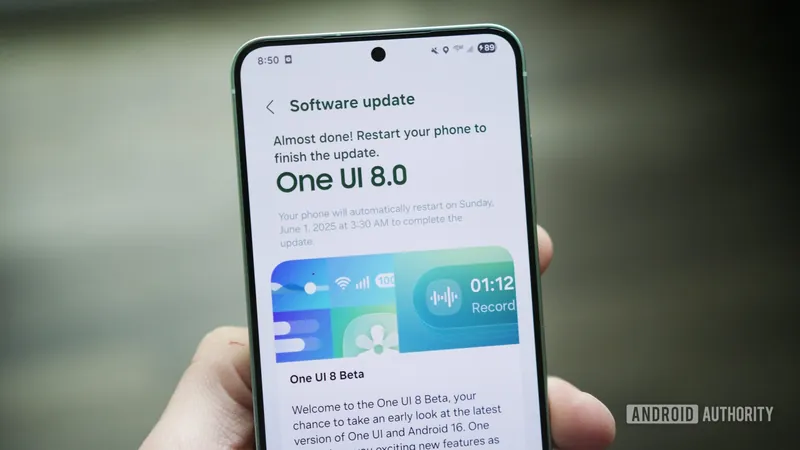
Apple's Liquid Glass: A Dazzling Disaster for Your Devices
2025-09-15
Author: Ying
Liquid Glass: The Futuristic Interface Everyone's Talking About
Apple has ambitious plans with Liquid Glass, an innovative design system aimed at transforming the way we interact with its devices. This eye-catching interface features a three-dimensional aesthetic where buttons and menus appear to float above the content you’re viewing, mimicking the properties of real glass. At first glance, it looks like a spectacular party trick, showcasing a brilliant display of color and light refracting before your eyes.
Impressive Yet Problematic
After experimenting with Liquid Glass across various devices during its beta phase, it’s evident that while the system has made noticeable improvements—like enhancing the readability of menus—it’s not without its flaws. Users have reported significant battery drain on devices like the iPhone 16, though updates are gradually addressing this issue.
One Size Doesn't Fit All
The core problem? Apple’s attempt to create a universal design language that fits every device, from watches to phones, often leads to a jarring user experience. Liquid Glass's focus on depth and physicality can turn into visual chaos, especially on devices where quick accessibility is key.
The Future of Digital Interaction?
As Apple continues to blur the lines between its devices, the introduction of features that make each gadget resemble another is both revolutionary and confusing. It's a significant shift for a company that historically excelled by optimizing design for specific hardware. While some features are beneficial, the overarching design philosophy could lead to a cluttered user interface that detracts from functionality.
When It Works vs. When It Falls Apart
Liquid Glass shines in augmented reality environments like the Vision Pro, where a three-dimensional interface enhances the immersion of blending the real and digital realms. However, when applied to the iPhone, the concept falters. The constant interplay of full-screen apps and menus makes everything feel cluttered, disrupting the seamlessness it promises. Colorful web pages in Safari can obscure essential features like the search bar, while busy wallpapers can render notifications unintelligible.
Challenges for the Apple Watch
The issues extend to the Apple Watch as well. Designed for quick glances and simplicity, Liquid Glass complicates things, making it harder to discern information. Finding an effective watch face is a struggle due to the design's tendency to blend time and wallpaper.
An Eye on the Future
Apple's vision seems to be gearing up for a future dominated by augmented reality and virtual reality. Liquid Glass may be an initial step toward a world where screens and reality intersect seamlessly. The goal is clear: a future where digital interfaces are naturally integrated into our physical surroundings.
A Design Philosophy in Flux
Yet, many of us are still navigating a reality filled with various screens, each demanding its own approach. Apple excelling in creating device-specific interactions is part of what made it a leader in technology. The past paradigm shift with iOS 7 showcased a commitment to a digital-first design that moved away from skeuomorphism. Today, we find ourselves at a crossroads with a design ethos that veers toward a sci-fi aesthetic, prioritizing style over clarity.
In summary, while Liquid Glass may be visually stunning, it raises critical questions about usability in the real world. Ultimately, users just want straightforward interfaces—sometimes, we don’t need our screens to mimic reality; we just need them to work.





 Brasil (PT)
Brasil (PT)
 Canada (EN)
Canada (EN)
 Chile (ES)
Chile (ES)
 Česko (CS)
Česko (CS)
 대한민국 (KO)
대한민국 (KO)
 España (ES)
España (ES)
 France (FR)
France (FR)
 Hong Kong (EN)
Hong Kong (EN)
 Italia (IT)
Italia (IT)
 日本 (JA)
日本 (JA)
 Magyarország (HU)
Magyarország (HU)
 Norge (NO)
Norge (NO)
 Polska (PL)
Polska (PL)
 Schweiz (DE)
Schweiz (DE)
 Singapore (EN)
Singapore (EN)
 Sverige (SV)
Sverige (SV)
 Suomi (FI)
Suomi (FI)
 Türkiye (TR)
Türkiye (TR)
 الإمارات العربية المتحدة (AR)
الإمارات العربية المتحدة (AR)